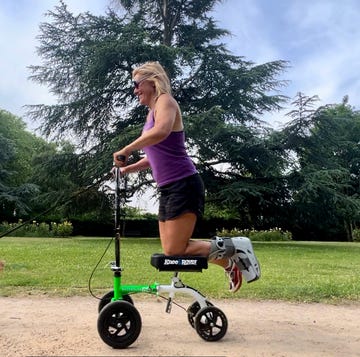One of the hardest parts of winter running is simply getting out of bed and out the door. As soon as the alarm clock goes off in the morning, the mental discussion begins: get up or sleep in? Run or day off? Likewise, it is also difficult for those who run in the evenings to get out the door after work in the dark and cold.
It’s hard to run in darkness, foul weather and cold temperatures, but as the saying goes, when the going gets tough, the tough get going.
Winter running is the time to develop your mental toughness and up your game. Finishing a run under miserable weather circumstances is an incredible confidence booster, and it will help get you out there next time.
The winter- and dark-running season calls for a shift in your workout perspective. Rather than focusing on the physical, like distance and pace, the winter can be a great time to focus on the mental aspects of running. Clearly defining your primary goal for your running will help you determine your winter training plan. Then, you can apply some of the tips listed below to help you achieve that goal.
How to keep running in the winter:
1. Consider using a three-day-a-week training plan to minimise time outdoors
You can opt to supplement this running with cross-training indoors two or three times a week.
2. Recruit a running partner, whether a friend or your dog
Under the coronavirus restrictions in England, you can currently run outside with one person from outside your household or bubble. If it is safe to do so, knowing you are meeting someone gets you out of bed and out the door.
3. Remind yourself daily of your goal
Whether your goal is running longer or faster, improving fitness or losing weight, remind yourself of this often. Stick reminders on the bathroom mirror, the refrigerator, your car or your workout bag.
4. Commit to be fit
When the alarm goes off and the mental argument of whether to sleep in or run begins, which one will win? Every time you get up and run, you reinforce that behaviour. Every time you bag it and sleep in, you reinforce that behaviour. So, reinforce the behaviour you want to win.
5. Make a 'bad weather plan'
It’s okay to give yourself an alternative in the event of ice, sleet or other dangerous conditions. Decide now what that plan will be: swap run days, get up and do a workout at home, or go to the gym and try some yoga.
6. Always prepare your clothing and workout bag the night before
Have everything ready to go so you do not need to spend any time preparing or even thinking about what you need in the morning. If you are a coffee drinker, have the coffee pot set to brew so it’s ready when you are.
7. Run in the morning
Some studies show that morning exercisers have a higher success rate than evening exercisers. They believe this is because of a lack of interference of responsibilities in the early morning hours. Late meetings after work, kid responsibilities and other commitments are more likely to come up in the afternoon than early in the morning.
8. Plan rewards
Prepare some rewards for yourself, both short-term and long-term. Consider including massages, pedicures, manicures, lunches or dinners out or buying new running clothing as a reward system for completing your running plans.
9. Invest in the right running clothes for your running weather
Having the right gear for any sport is essential, so invest in the appropriate running gear you need for your weather. It will make getting out in cold weather much more tolerable.













